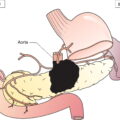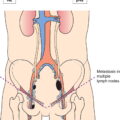The classification applies only to carcinomas. There should be histological confirmation of the disease. Note This classification does not apply to carcinomas of the ampulla of Vater. The regional lymph nodes for the duodenum are the pancreaticoduodenal, pyloric, hepatic (pericholedochal, cystic, hilar) and superior mesenteric nodes. The regional lymph nodes for the ileum and jejunum are the mesenteric nodes, including the superior mesenteric nodes, and, for the terminal ileum only, the ileocolic nodes, including the posterior caecal nodes. Note The non‐peritonealized perimuscular tissue is, for jejunum and ileum, part of the mesentery and, for duodenum in areas where serosa is lacking, part of the retroperitoneum. The pT and pN categories correspond to the T and N categories. Note pM0 and pMX are not valid categories.
SMALL INTESTINE (ICD‐O‐3 ICD‐O C17)
Rules for Classification
Anatomical Subsites (Fig. 155)
Regional Lymph Nodes
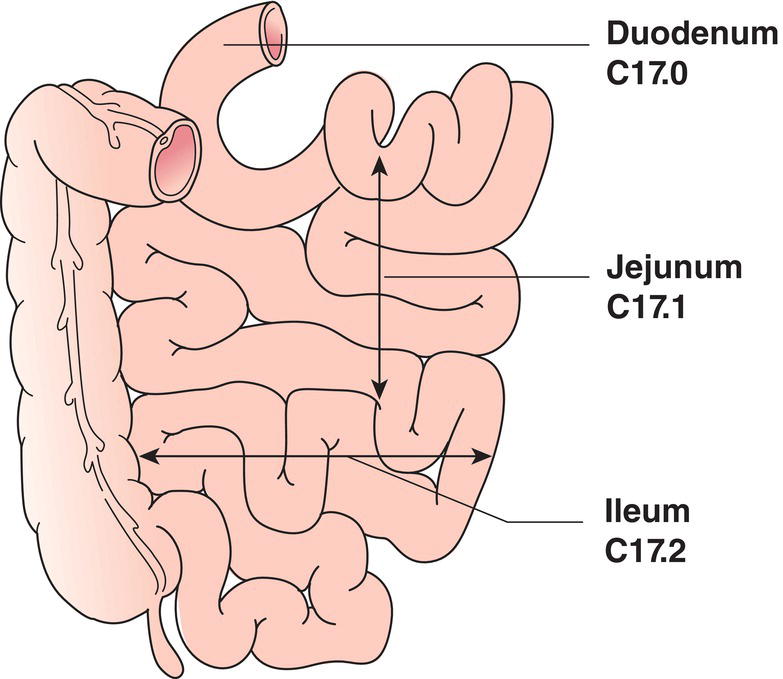
TNM Clinical Classification
T – Primary Tumour
TX
Primary tumour cannot be assessed
T0
No evidence of primary tumour
Tis
Carcinoma in situ
T1
Tumour invades lamina propria, muscularis mucosae or submucosa (Fig. 156)
T1a
Tumour invades lamina propria or muscularis mucosae
T1b
Tumour invades submucosa
T2
Tumour invades muscularis propria (Fig. 157)
T3
Tumour invades subserosa or non‐peritonealized perimuscular tissue (mesentery or retroperitoneum*) without perforation of the serosa (Fig. 158)
T4
Tumour perforates visceral peritoneum or directly invades other organs or structures (includes other loops of small intestine, mesentery, or retroperitoneum and abdominal wall by way of serosa; for duodenum only, invasion of pancreas) (Figs. 159, 160, 161) 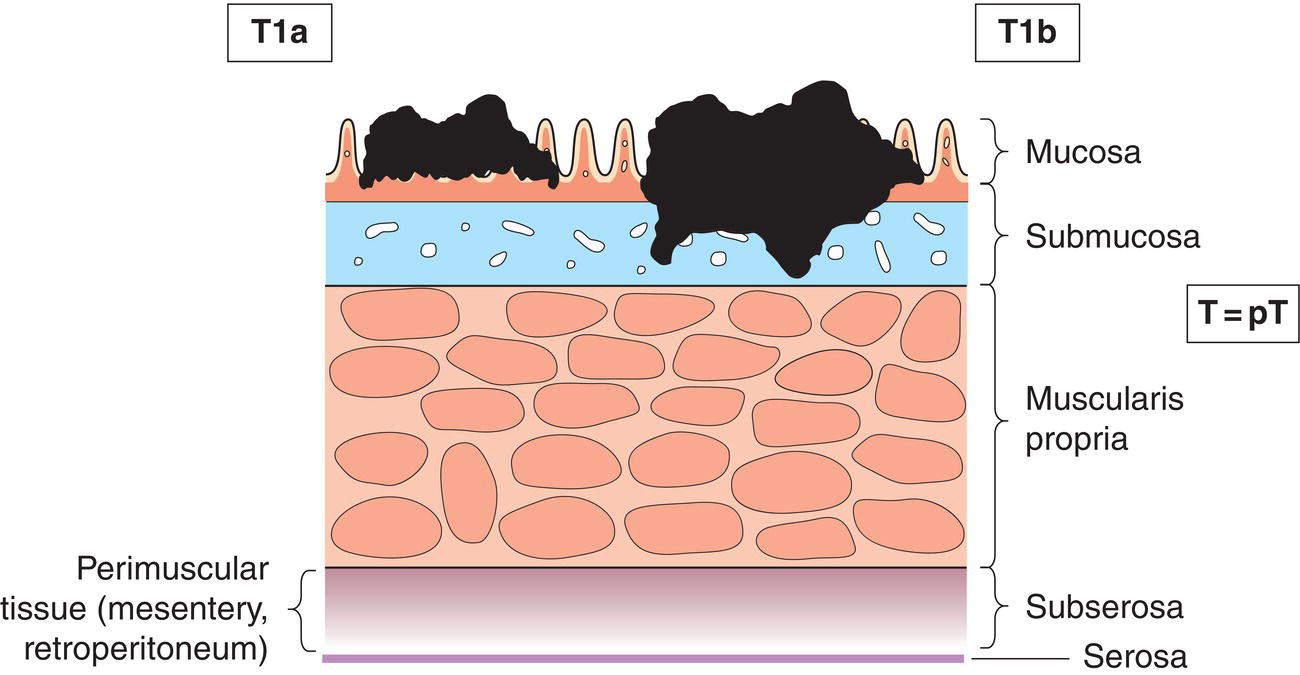
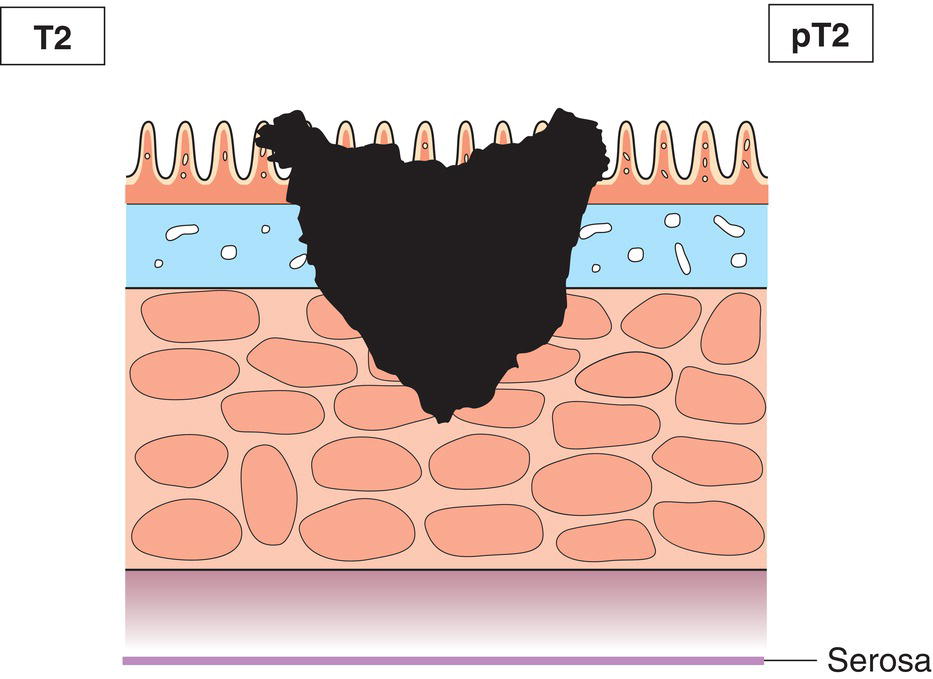
N – Regional Lymph Nodes
NX
Regional lymph nodes cannot be assessed
N0
No regional lymph node metastasis
N1
Metastasis in 1 to 2 regional lymph nodes
N2
Metastasis in 3 or more regional lymph nodes 
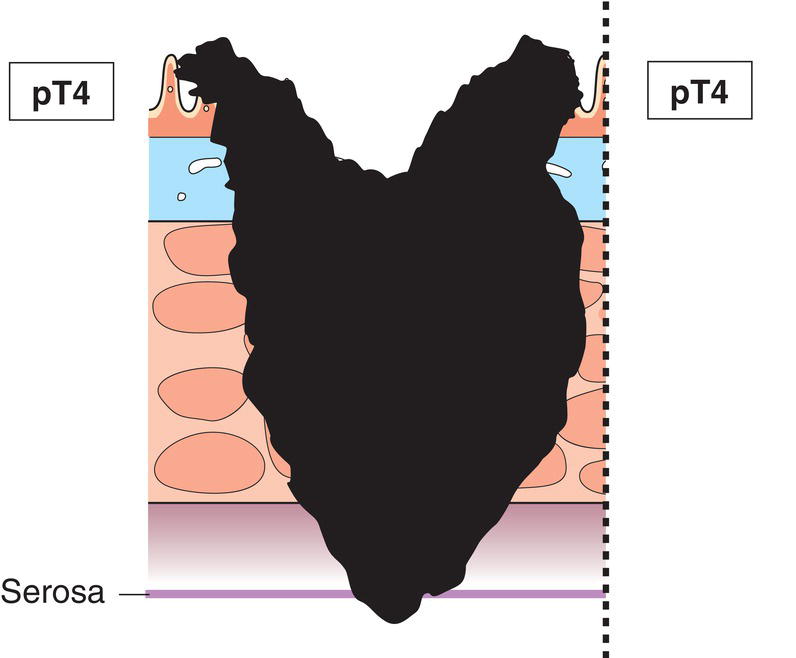
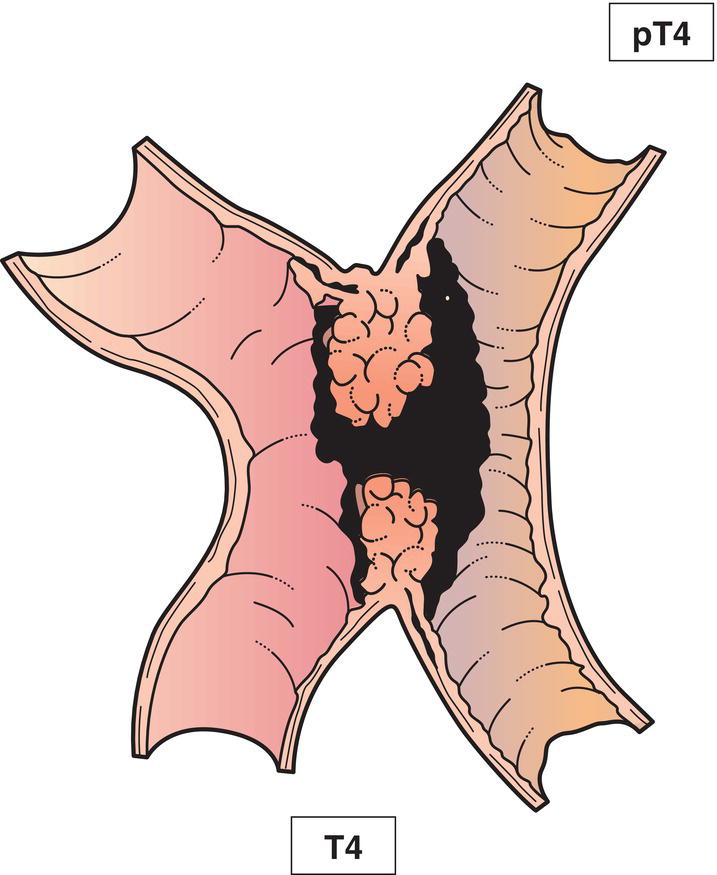
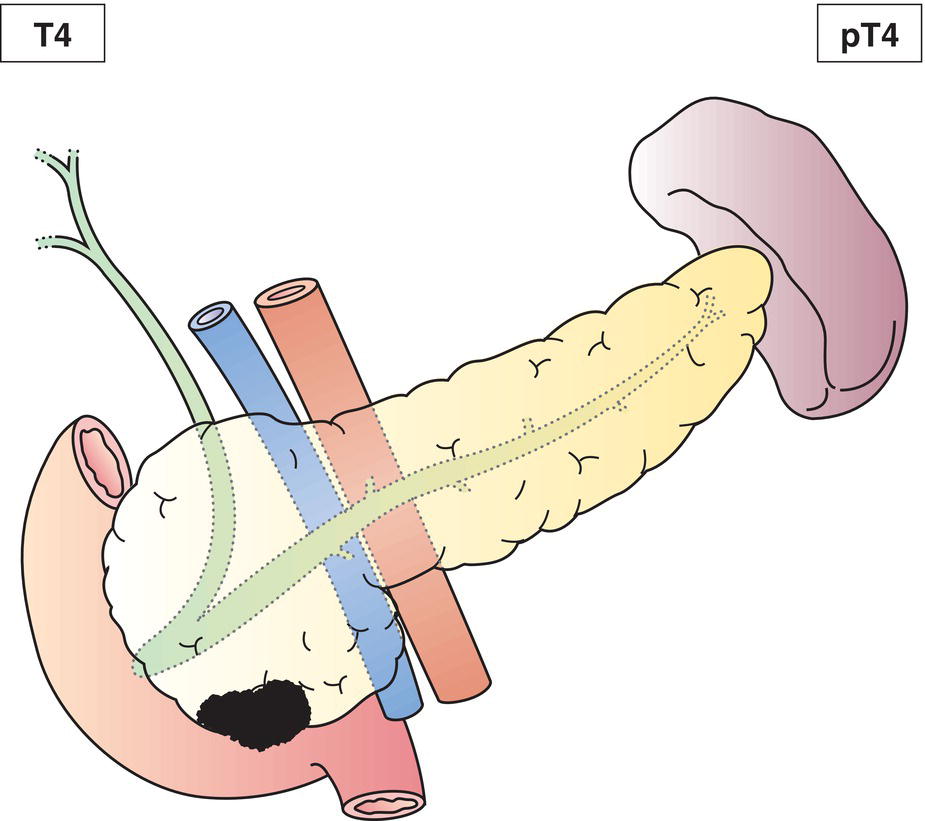
M – Distant Metastasis
M0
No distant metastasis
M1
Distant metastasis
pTNM Pathological Classification
pM1
Distant metastasis microscopically confirmed
pN0
Histological examination of a regional lymphadenectomy specimen will ordinarily include 6 or more lymph nodes. If the lymph nodes are negative, but the number ordinarily examined is not met, classify as pN0.
Summary
Stay updated, free articles. Join our Telegram channel

Full access? Get Clinical Tree



